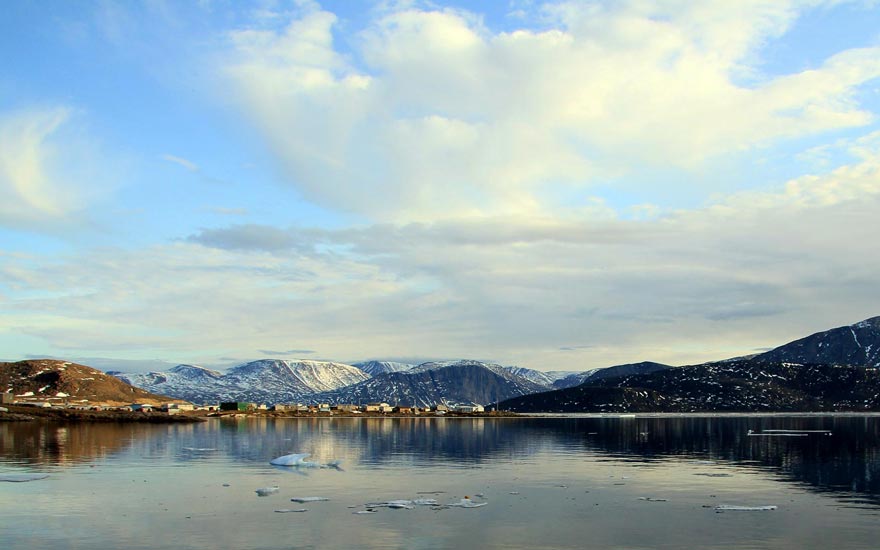Located at the northern entrance to Auyuittuq National Park, Qikiqtarjuaq is a welcoming and picturesque community. Qikiqtarjuaq is the Inuktitut word meaning ‘big island’. This cheerful community is nestled on the ocean amongst small mountains.
The people of Qikiqtarjuaq are experts at navigating the challenging seas and rugged landscape. You will experience the patience of the people that comes from years of those who live off the land. Waiting for ideal weather or the tides to subside with grace and humour, will leave you wanting to spend more time in this wonderful location.
Essential experiences include:
- Exploring the splendor of Auyuittuq National Park: Mount Asgard, Mount Thor and the dramatic Pangnirtung Pass ice cap
- Diving aside magnificent icebergs
- Viewing bowhead, narwhal, and orca whales, as well as walruses and seals
Many visitors use Qikiqtarjuaq as the starting point for their trek through Auyuittuq National Park. An abundance of sea life – migratory birds, whales, seals, and polar bears populate the area. Expert local guides can share with you their experience on how to get the most out of the Auyuittuq experience, imparting knowledge that will help you on your journey.
Local outfitters also provide transportation and interpretive services for visitors wishing to fish in the area. You will see hunters returning from their hunts with an abundance of food for their families. You will see fisherman returning with full catches of arctic char and turbot.
Qikiqtarjuaq is also strategically located for iceberg viewing: the northern cape near the town captures many of the icebergs that travel down Davis Strait from Greenland making this an excellent location to see icebergs as they begin their movement south.
History
With its strategic location facing Baffin Bay, the military built a radar site near the current community of Qikiqtarjuaq. This vital station was a part of the Distant Early Warning (DEW) line, which monitored the movement of aircraft in the arctic. In 1962, there was a mass movement of Inuit from nearby Kivitoo after a tragic drowning. Inuit sought the refuge that the military base provided. As with other communities with these DEW Line ties, you will find that local Inuit are welcoming to visitors and knowledgeable of the outside world.
This traditional community has much to offer. There are traditional sealskin parkas and boots (kamiit) as well as arts made here. And there are the memories of the warmth and beauty of this special place that will last a lifetime.






